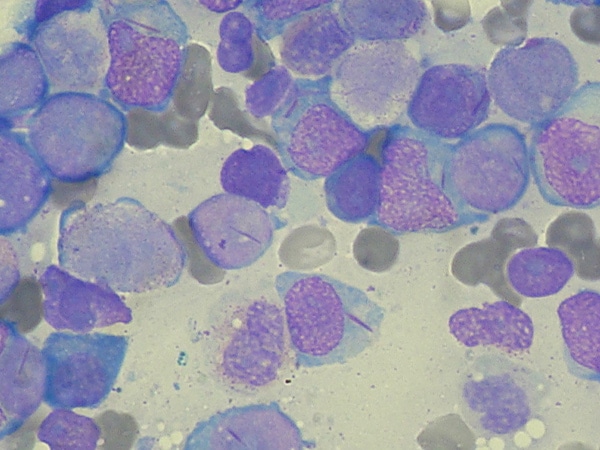FDA Approves a New Treatment for Acute Myeloid Leukemia
The new treatment, Vyxeos, comprises a combination of two commonly used cytotoxic chemotherapeutics inside a nanosized particle.

The U.S. Food and Drug Administration (FDA) recently approved a new treatment called Vyxeos for treating certain patients with acute myeloid leukemia (AML).
Vyxeos is intended for the treatment of adults with two types of AML that have particularly poor prognoses: newly diagnosed therapy-related AML and AML with myelodysplasia-related changes.
AML is the form of leukemia that carries the worst prognosis; according to the National Cancer Institute, the five-year relative survival rate is just 26.9 percent.
Vyxeos provides an alternative approach to delivering two of the cytotoxic chemotherapeutics commonly used to treat many patients with AML, daunorubicin and cytarabine. Until the approval of Vyxeos, these two agents were always given separately. In Vyxeos, a fixed combination of daunorubicin and cytarabine are enclosed together in a nanosized particle.
Nanotechnology refers to the manufacturing of objects with dimensions one million times smaller than a millimeter (the smallest width of a human hair is just 50 times smaller than a millimeter). Nanomedicine is the application of nanotechnology to the research and practice of medicine. Nanodrugs comprise an anticancer agent (or agents) and a nanosized carrier that selectively delivers the anticancer agent to the cancer and protects the anticancer agent from being destroyed by the body. Thus, nanodrugs allow the delivery of higher levels of anticancer agents to cancer cells than traditional systemic delivery methods, increasing effectiveness while reducing toxic side effects.
In the case of Vyxeos, the nanosized carriers are liposomes and the anticancer agents are daunorubicin and cytarabine. According to the FDA statement, Vyxeos was approved based on results from a randomized phase III clinical trial that showed that median overall survival for patients who received the new treatment was significantly improved compared with who received daunorubicin and cytarabine separately (9.56 months compared with 5.95 months).
The FDA approval was rendered on August 3, 2017.
